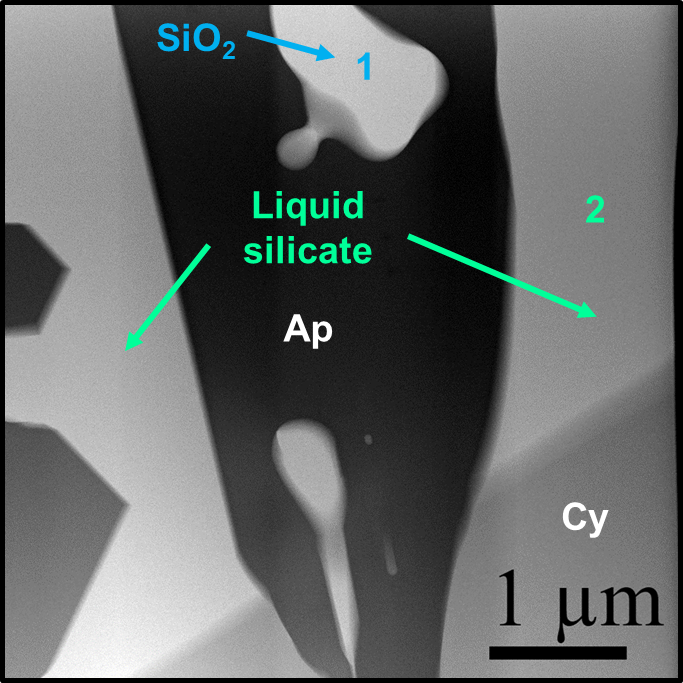[Article] - High temperature corrosion of ceramics used in aeronautical engines : morphology of the protecting phases
The durability of the ceramic coatings used to protect the turbine blades in the field of aeronautical engines is strongly linked to their ability to withstand corrosion by calcium-magnesium-aluminosilicates (i.e. CMAS), which can infiltrate their microstructure when liquid at high temperature. Protection can be provided thanks to the high reactivity of the ceramic coatings with CMAS leading to the fast precipitation of protective phases. Most ceramic coatings contain rare-earth elements (e.g. rare-earth monosilicates RE2SiO5 or rare-earth disilicates RE2Si2O7), making them thus able to form oxyapatite Ca3RE8Si6O26 after reaction with the silicate melts. The present works proposes to study the morphology of these precipitated phases depending on the nature of the rare-earth source. A model ternary melt CaO-Al2O3-SiO2 has thus been put in contact at 1300 °C with different sources of yttrium: oxide Y2O3, monosilicate Y2SiO5 and disilicate Y2Si2O7. The reactivity led to the precipitation of the two phases of interest (i.e. apatite Ca2Y8(SiO4)6O2 and cyclosilicate Ca3Y2(Si3O9)2). The use of these simplified systems allows to establish the precipitation mechanisms of the phases at equilibrium regarding previously established phase diagrams. Depending on the yttrium source, the chemical reactions involved local modifications of the melt composition, which strongly influenced the morphology of the precipitated phases at equilibrium. Specifically, it is demonstrated here that the release of SiO2 in the melt when starting from yttrium disilicate involves a specific microstructure of the acicular apatite, which exhibits a core containing precipitated SiO2.
Autors
J. Bonnal, C. Petitjean, P.J. Panteix, L. Saint-Jean, D. Bonina, S. Arnal, M. Vilasi
References
Materialia 39 (2025) 102374

